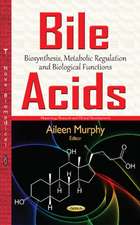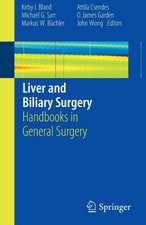Nonalcoholic Fatty Liver Disease: New Insights
Editat de Ramn Anibal Rodrigo Salinasen Limba Engleză Hardback – 2016
Preț: 929.51 lei
Preț vechi: 1079.99 lei
-14% Nou
Puncte Express: 1394
Preț estimativ în valută:
177.87€ • 187.03$ • 146.97£
177.87€ • 187.03$ • 146.97£
Carte disponibilă
Livrare economică 27 martie-10 aprilie
Preluare comenzi: 021 569.72.76
Specificații
ISBN-13: 9781634842174
ISBN-10: 1634842170
Pagini: 137
Dimensiuni: 155 x 230 x 16 mm
Greutate: 0.39 kg
Editura: Nova Science Publishers Inc
Colecția Nova Science Publishers Inc
ISBN-10: 1634842170
Pagini: 137
Dimensiuni: 155 x 230 x 16 mm
Greutate: 0.39 kg
Editura: Nova Science Publishers Inc
Colecția Nova Science Publishers Inc
Cuprins
Preface; Current Diagnosis & Therapy in Nonalcoholic Fatty Liver Disease; Molecular Mechanisms in the Development & Progression of Nonalcoholic Fatty Liver Disease; Role of Oxidative Stress & Inflammation in the Pathophysiology of Nonalcoholic Fatty Liver Disease; Non-Alcoholic Fatty Liver Disease & the Metabolic Syndrome; Non-Alcoholic Fatty Liver Disease: Novel Therapeutic Approaches; The Potential Role of Polyphenols in Nonalcoholic Fatty Liver Disease Treatment; Index.








